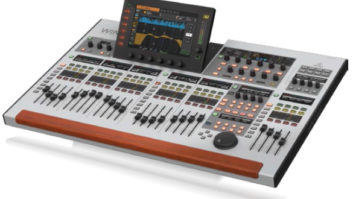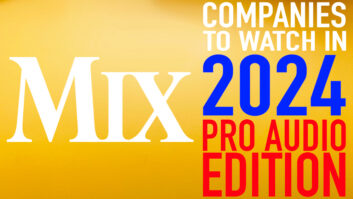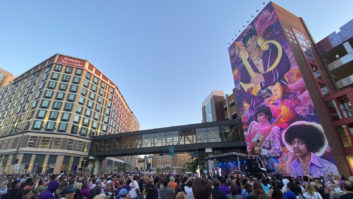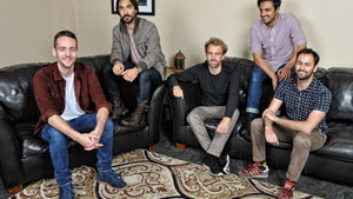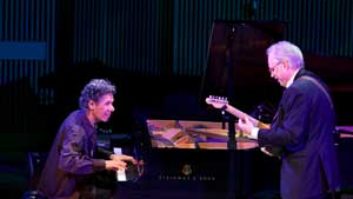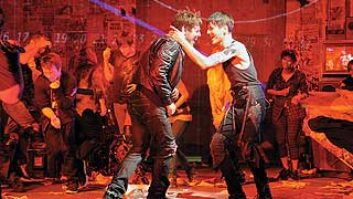Designer John Storyk’s approach
at Vocomotion was to create something that resembled a
high-end mastering suite.
Inset: Vocomotion owner Freddie Feldman. Thanks to the television series, The Sing Off, a cappella music has enjoyed a new audience of fans all over the country. However, the genre is anything but new. In the early 1900s, schools and universities all across the nation had glee clubs, and barbershop harmony— a distinctly American musical genre—had begun to set its roots, remaining popular to this day. Freddie Feldman, owner of Skokie, IL-based Vocomotion Studio, has been dedicated to recording a cappella for about a dozen years since performing in an a cappella group at his alma mater, Northwestern University.

Feldman’s focus and dedication to the genre has earned him a loyal, steady and internationally oriented customer base. Vocomotion is the third a cappella-oriented studio he has owned, and he says there are currently about a half dozen other studios in the world that are also focused exclusively on this genre. Throughout the entire process of design, construction and integration, Feldman was intent on making Vocomotion among the best in the world at what it does—capturing outstanding vocal performances.

Even though Feldman had just shy of 500 square feet of space to work with, he had a clear understanding of how critical an acoustically accurate recording environment would be for both recording and mixing. Therefore, one of his first ideas was to reach out to designer John Storyk of Highland, NY-based Walters-Storyk Design Group (WSDG). “Everybody asks me, ‘How did you get John Storyk to design this little 400-square-foot studio?’ I tell them, ‘I just sent him an e-mail!’”
In his design brief, Feldman explained that he wanted as little as possible between himself and the monitors. Storyk’s approach to the facility was to create something that resembled a high-end mastering suite. “Vocomotion definitely falls into the new ‘vest pocket’ studio category we’ve done so much work in over the past few years,” observes Storyk. “In this design, we were able to accomplish a spacious feel that belies its physical limits.” To complement this spacious feeling, a clear acrylic console was placed in the control room, and the racks of gear were located directly behind the listening position.
Having a relatively small space was not a concern for Feldman. His approach is to track singers in multiple layers. Therefore, he only required an 8×8-foot iso booth in addition to the control room. He says that by recording singers using multiple layers and overdubs, he is able to capture each track with maximum precision, while maintaining the greatest possible control over the final mix.
Just as his recording environment is completely focused on a cappella, so is his gear. His recording setup centers on an Avid Pro Tools|HD 3 Accel system, along with an eclectic, high-end collection of microphones and outboard gear to help bring out the best in his clients’ vocal performances. His microphone of choice for singing is a Lawson L2 51 tube; for vocal percussion, he relies on a Neumann TLM 103, which he says has a “crisp sound and a nice bottom end.”
Other microphones that see frequent use in the studio include a Sonotronics SIGMA ribbon, which he frequently uses on bass vocals; RCA 74 and SK-46 ribbon microphones; and Vocomotion Labs’ Thumper TH60 and TH70 throat microphones which he designed and built himself: “I earned Bachelor degrees in both vocal performance and engineering at Northwestern, and have always been interested in developing technical innovations,” Feldman says. “In addition to the Thumper mics, I’m working on a new concept compressor/ limiter and other prototypes.”
At the input stage, he prefers a Great River preamplifier, which he uses because of its detailed sound and flexibility on impedance settings. Feldman will then typically bring the signal through a suitable combination of other outboard gear, depending on whether the performance is a lead vocal, a bass vocal or vocal percussion. Some other devices that see regular use include a Retro Instruments Sta-Level tube compressor (a replica of the legendary 1958 Gates model); a 1970s ADR vocal stressor (for EQ and compression), as well as Dolby 361 SR/A noise-reduction unit, which he says makes the sound more “airy.” For AD conversion, he uses a 16-channel Lynx Aurora before going into the Pro Tools environment.
At the mix bus, Feldman uses an API 2500 compressor. “This is really gluing a lot of the tracks together,” he observes. “I have all these lead vocal tracks that are stacked, and the API 2500 smoothes everything out and makes it sound like a record. The difference is very audible.”
Some of the notable music that Feldman has recorded in recent years includes a critically acclaimed version of Pink Floyd’s The Dark Side of the Moon, done completely in a cappella with no instruments. In recent months, he completed work on an album for a Danish group called Basix. “This happened just after we opened the new studio,” he recalls. “The material is among the best stuff I ever mixed, and they are certainly one of the best groups I’ve ever worked with.”
Vocomotion
vocomotion.com
